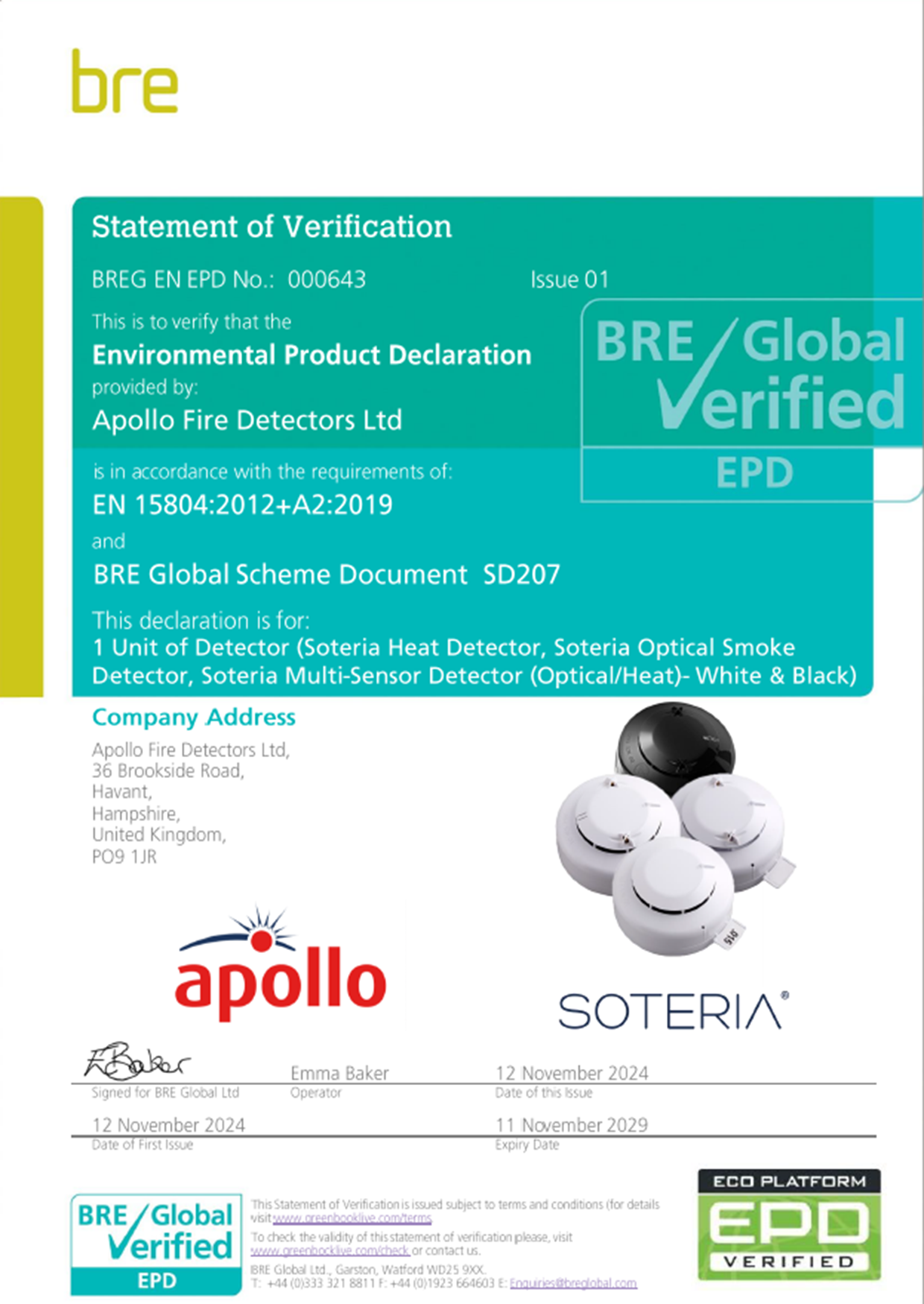The Growing Importance of Environmental Product Declarations in Fire Detection Systems
Sustainability has become a core focus in the construction industry, with an increasing emphasis on assessing the environmental impact of building materials and systems.
For fire detection manufacturers, Environmental Product Declarations (EPDs) are emerging as an essential tool in sharing environmental information, supporting sustainability goals, and meeting regulatory and market demands.
What Is an EPD?
An Environmental Product Declaration (EPD) is a third-party verified document that provides standardised information about a product's environmental impact over its entire lifecycle. Developed in line with EN15804+A2 standards, EPDs are a trusted framework for comparing products and systems based on their environmental performance.
To produce an EPD, manufacturers must first conduct a comprehensive life-cycle assessment (LCA) following ISO14040 and ISO14044 standards. This process evaluates the environmental impact of a product from raw material extraction through production, use, and eventual disposal. Once the LCA is complete, it is used to create an EPD in compliance with EN15804+A2 and the relevant product category rules (PCR). Finally, the EPD undergoes third-party verification before being made publicly available.
Challenges in Creating EPDs for Fire Detection Products
Although EPDs are widely used for many construction materials, such as windows and flooring, they are relatively new in the fire detection industry. Creating EPDs for fire detection products presents unique challenges due to the complexity and variety of components involved. This, coupled with the relatively recent demand for EPDs in this sector, has resulted in limited availability.
Despite these challenges, EPDs are invaluable for:
- Manufacturers: Substantiating sustainability claims and highlighting efforts to reduce environmental impact.
- System Designers: Enabling the design of lower-carbon systems while meeting fire safety standards.
- Building Owners and Regulators: Providing transparent carbon footprint data for compliance and certification purposes.
Interim Solutions: TM65 Forms
In cases where EPDs are not yet available, manufacturers can provide embodied carbon information using TM65 forms, developed by CIBSE. TM65 estimates the carbon footprint of building services products, including fire detection systems, based on generic assumptions. While less detailed and not third-party verified, TM65 forms are a practical alternative to completely non-product-specific data, offering insights into the carbon impact of specific products.
However, TM65 is expected to be phased out as the industry progresses towards more accurate and detailed EPDs in response to evolving regulations and market demands.

The Road Ahead: Designing Responsible Fire Detection Systems
As EPDs become more prevalent, they will enable more informed decision-making across the industry. Access to detailed environmental data will allow designers to create fire detection systems that balance fire safety, regulatory requirements, and carbon reduction goals. Furthermore, the availability of EPDs for all components within a system will support the design of more sustainable buildings and systems.
At Apollo Fire Detectors, we are committed to addressing the challenges of producing EPDs for our products. By investing in sustainability initiatives and aligning with industry best practices, we aim to lead the way in providing reliable environmental data that supports our customers and partners in achieving their sustainability goals.